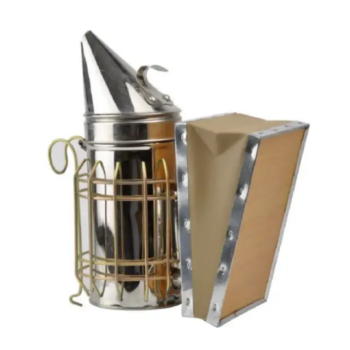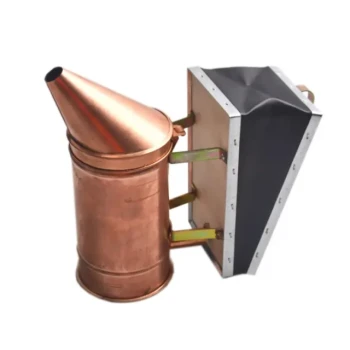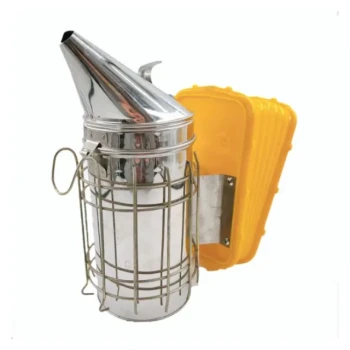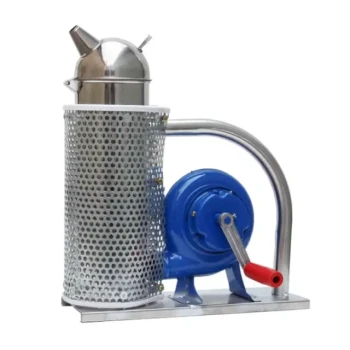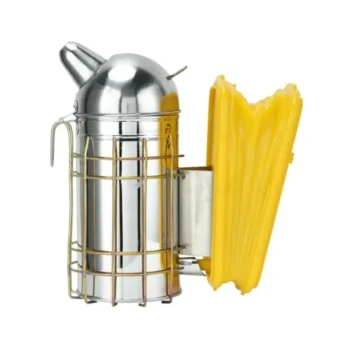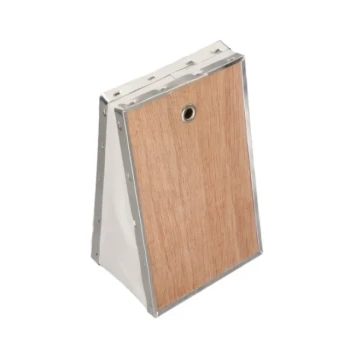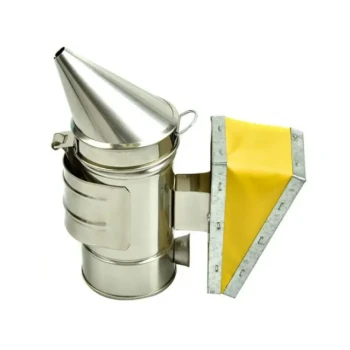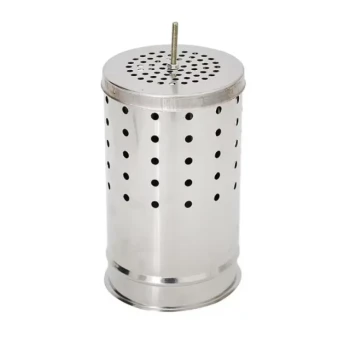At its core, a bee smoker is a tool for managing a honeybee colony's defensive response. Its primary purpose is to calm the bees, allowing a beekeeper to safely inspect the hive with minimal stress to both the bees and themselves. The smoke works by interfering with the bees' chemical communication and triggering a natural survival instinct.
The smoker does not sedate the bees; instead, it cleverly exploits their instincts. By simulating a forest fire, it masks their alarm signals and redirects their focus from defense to survival, making them far more docile.
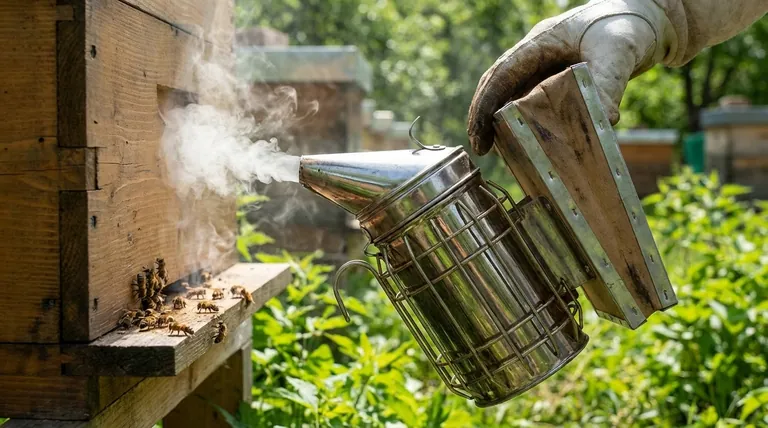
How Smoke Alters Bee Behavior
To use a smoker effectively, it's crucial to understand the two distinct ways it influences a bee colony. These mechanisms work together to create a window of opportunity for the beekeeper.
Masking Alarm Signals
When a hive perceives a threat, guard bees release alarm pheromones—specifically chemicals like isopentyl acetate and 2-heptanone. This scent acts as a chemical alarm bell, instantly signaling other bees in the colony to become aggressive and coordinate an attack.
Smoke effectively jams this communication channel. The strong smell of the smoke overwhelms the delicate pheromones, preventing the alarm from spreading throughout the hive. Without this signal, a large-scale defensive response is never mounted.
Triggering a Survival Instinct
Bees instinctively associate smoke with a forest fire, their most significant natural threat. When they detect smoke, their priorities shift immediately from defending the hive to preparing for a potential evacuation.
This triggers a powerful feeding response. The bees rush to the honeycomb and gorge themselves on honey, stocking up on energy reserves in case they have to abandon their home and build a new one.
A bee with a full stomach of honey is physically less able to curl its abdomen to sting. More importantly, its focus is entirely on consumption, not on the beekeeper inspecting the hive.
Proper Technique for Using a Bee Smoker
Effective use is about finesse, not force. The goal is to apply just enough smoke to achieve the desired effect without causing undue stress or harm to the colony.
The Initial Approach
Always start by applying a few gentle puffs of smoke at the hive entrance about a minute before you open it. This serves as a calm warning, allowing the smoke's effects to begin before the more invasive inspection starts.
During the Inspection
After opening the hive, use smoke sparingly. A few light puffs across the tops of the frames are usually all that is needed to keep the bees occupied. Heavy, continuous smoking is unnecessary and counterproductive.
If You Get Stung
If you are stung, the bee's stinger releases alarm pheromone, which can attract more bees to that exact spot. Smoke the area of the sting immediately to mask this pheromone and prevent a chain reaction of further stings.
Understanding the Trade-offs and Risks
While essential, a smoker is a tool that must be used with respect and caution. Improper use can create more problems than it solves.
The "Too Much Smoke" Problem
Over-smoking a hive is a common mistake. Excessive smoke can agitate the bees instead of calming them and can be harmful to their respiratory systems (as well as the beekeeper's). Moderation is critical.
The "Hot Smoke" Danger
The smoke that comes out of the smoker should be cool and white. Hot smoke can burn the bees' delicate wings. Always test the smoke's temperature on your hand from a safe distance before directing it at the bees, and keep the nozzle at least five inches away from them.
It's a Tool, Not a Crutch
A smoker does not replace the need for calm, gentle beekeeping practices. Quick, jarring movements will still alarm bees, regardless of how much smoke you use. The smoker should complement a slow and deliberate inspection routine.
Making the Right Choice for Your Hive
How you use the smoker should align with your goals for the inspection and your philosophy as a beekeeper.
- If your primary focus is safety and efficiency: Use minimal, cool smoke at the entrance before opening the hive to preemptively manage the colony's defensiveness.
- If your primary focus is bee health and welfare: Remember that smoke is a stressor and should be used moderately, always prioritizing calm movements and favorable weather over heavy application.
Ultimately, a bee smoker is a tool that allows you to have a temporary, controlled conversation with the hive, creating a safer environment for everyone involved.
Summary Table:
| Purpose of a Bee Smoker | Key Mechanism |
|---|---|
| Calm the Colony | Masks alarm pheromones to prevent a coordinated defensive attack. |
| Redirect Bee Focus | Triggers a survival instinct, causing bees to gorge on honey instead of stinging. |
| Enable Safe Inspection | Creates a temporary window for the beekeeper to work with minimal stress to the bees. |
Ready to work with your bees more safely and efficiently?
A reliable bee smoker is essential for every inspection. At HONESTBEE, we supply commercial apiaries and beekeeping equipment distributors with high-quality, durable smokers and other essential tools through our wholesale-focused operations.
Let us equip you for success. Contact our team today to discuss your beekeeping supply needs and discover the HONESTBEE difference.
Visual Guide
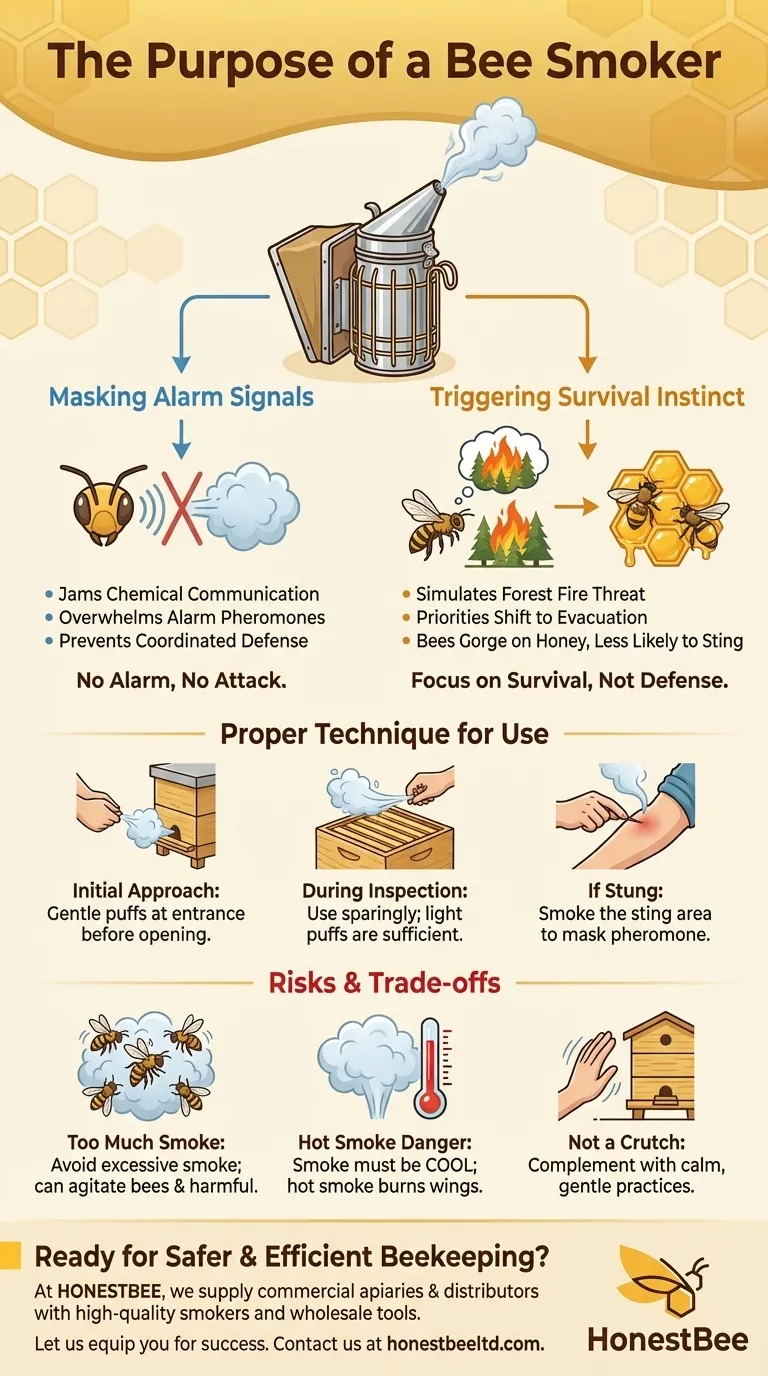
Related Products
- Stainless Steel Honey Bee Smoker Hive and Honeycomb Smoker for Beekeeping
- Economy Galvanized Beekeeping Honey Bee Smoker for Wholesale
- Premium Traditional Copper Bee Smoker with Bellows
- Professional Bee Smoker with Elongated Spout and Durable Bellows for Beekeeping
- Heavy Duty Manual Bee Smoker Blower for Beekeeping
People Also Ask
- What is a bee smoker and what is its primary purpose? Master Safe Hive Inspections
- How did early beekeepers use bee smokers? Master Ancient Bee Calming Techniques
- What is the smoke that beekeepers use? The Secret to Safe and Calm Hive Inspections
- What is the purpose of a bee smoker and how should it be used? A Guide to Calm, Safe Hive Inspections
- What is a Smoker and how is it used in beekeeping? The Essential Tool for Calm, Safe Hive Inspections
